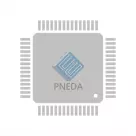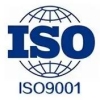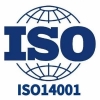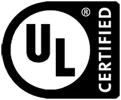Intelligent driving ecological interaction, leading the new future of the automotive chip industry

Intelligent driving is one of the hot topics in today's automotive industry, which can not only improve driving safety and comfort, but also improve traffic efficiency and reduce energy consumption. One of the key technologies to achieve intelligent driving is the car chip, which is the core component of the intelligent driving system, responsible for processing sensor data, decision-making and control.
Intelligent driving ecological interaction refers to the cooperation and collaboration between various links in the field of intelligent driving, including chip manufacturers, car manufacturers, software developers, sensor manufacturers, etc., to promote the development and application of intelligent driving technology through win-win cooperation. This interactive relationship can not only improve the performance and reliability of the product, but also accelerate the speed of technological innovation and promotion, and jointly create a new future for the automotive chip industry.
First of all, chip manufacturers are an important part of the interaction of intelligent driving ecology. They are responsible for the design, manufacture and supply of chip products that provide powerful computing and processing power for intelligent driving systems. Chip manufacturers need to work closely with car manufacturers and software developers to understand their needs and technical requirements, and develop high-performance, low-power chip products according to market demand. In addition, chip manufacturers also need to work with sensor manufacturers to ensure that the chip is compatible with a variety of sensors and can efficiently process sensor data.
Second, car manufacturers play a key role in the intelligent driving ecosystem interaction. They need to work closely with chip manufacturers and software developers to ensure that chips and software can be seamlessly integrated with automotive hardware and systems. Automakers also need to provide test environments and data to help chip makers and software developers develop and optimize. In addition, automakers also need to work with governments and standards organizations to develop policies and standards to promote the development and application of intelligent driving technology.
Software developers are another important player in the interaction of the intelligent driving ecosystem. They are responsible for developing software for intelligent driving systems, including modules such as perception, decision making and control. Software developers need to work closely with chip manufacturers and automakers to ensure that the software takes full advantage of the chip's computing and processing power and integrates seamlessly with automotive hardware and systems. In addition, software developers also need to work with service providers such as mapping, navigation and communication to provide the necessary data and service support for intelligent driving systems.
Sensor manufacturers are another important player in the interaction of the intelligent driving ecosystem. They are responsible for the production of various sensors such as cameras, radars, lidar, etc., which are used to sense the environment around the vehicle. Sensor manufacturers need to work closely with chip manufacturers and automakers to ensure that sensors can be seamlessly integrated with chips and automotive systems, and can provide accurate and reliable data. In addition, sensor manufacturers also need to work with map service providers and software developers to provide the necessary map data and algorithm support for intelligent driving systems.
To sum up, the interaction of intelligent driving ecology is an important way to promote the development and application of intelligent driving technology. Through the cooperation and collaboration between chip manufacturers, car manufacturers, software developers and sensor manufacturers, the performance optimization, technological innovation and promotion of intelligent driving system can be achieved, and the new future of the automotive chip industry can be led.
Die Produkte, an denen Sie interessiert sein könnten
 |
AMPMDGC-6.7800T3 | MEMS OSC XO 6.7800MHZ CMOS SMD | 6822 More on Order |
 |
AMJMDFL-84.0000T3 | MEMS OSC XO 84.0000MHZ CMOS SMD | 7560 More on Order |
 |
AMPMDDA-1.0000T | MEMS OSC XO 1.0000MHZ CMOS SMD | 7164 More on Order |
 |
ASTMUPCE-33-8.000MHZ-EY-E-T | MEMS OSC XO 8.0000MHZ LVCMOS SMD | 3474 More on Order |
 |
ASD3-40.000MHZ-EC-T3 | XTAL OSC XO 40.0000MHZ HCMOS SMD | 4122 More on Order |
 |
AX7PBF1-1152.0000T | XTAL OSC XO 1.1520GHZ LVPECL SMD | 2088 More on Order |
 |
AX5PBF1-1124.0000C | OSC XO 1.124GHZ 2.5V LVPECL | 8028 More on Order |
 |
AX7PBF3-920.0000C | XTAL OSC XO 920.0000MHZ LVPECL | 6444 More on Order |
 |
AX5PBF4-575.0000C | OSC XO 575MHZ 2.5V LVPECL | 2646 More on Order |
 |
AX5DBF2-614.4000C | OSC XO 614.4MHZ 2.5V LVDS | 7686 More on Order |
 |
AX5MCF3-475.0000T | OSC XO 475MHZ 1.8V CML | 3636 More on Order |
 |
AX5PBF1-270.0000C | OSC XO 270MHZ 2.5V LVPECL | 8460 More on Order |
 |
AX7MBF4-122.8800T | XTAL OSC XO 122.8800MHZ CML SMD | 5220 More on Order |
 |
ASTMHTA-25.000MHZ-ZK-E-T | MEMS OSC XO 25.0000MHZ LVCMOS | 5382 More on Order |
 |
ASTMHTFL-14.7456MHZ-AR-E-T3 | MEMS OSC XO 14.7456MHZ LVCMOS | 5130 More on Order |
 |
ASET-33.000MHZ-Y-T | XTAL OSC XO 33.0000MHZ CMOS SMD | 3348 More on Order |
 |
ASTMHTE-120.000MHZ-XC-E-T3 | MEMS OSC XO 120.0000MHZ LVCMOS | 6876 More on Order |
 |
ABM12W-38.8800MHZ-7-J2Z-T3 | CRYSTAL 38.8800MHZ 7PF SMD | 2538 More on Order |
 |
ABM12W-33.3330MHZ-8-B2U-T3 | CRYSTAL 33.3330MHZ 8PF SMD | 6804 More on Order |
 |
ABM8-40.000MHZ-B2-T3 | CRYSTAL 40.0000MHZ 18PF SMD | 5544 More on Order |
 |
ABM8W-19.6608MHZ-7-B1U-T3 | CRYSTAL 19.6608MHZ 7PF SMD | 5598 More on Order |
 |
ABM8W-16.9340MHZ-6-D2X-T3 | CRYSTAL 16.9340MHZ 6PF SMD | 2700 More on Order |
 |
ABM8W-13.5305MHZ-6-D2X-T3 | CRYSTAL 13.5305MHZ 6PF SMD | 5112 More on Order |
 |
ASSFLP1-C04 | XTAL OSC PROG XO CMOS CS 2.5V | 2700 More on Order |









